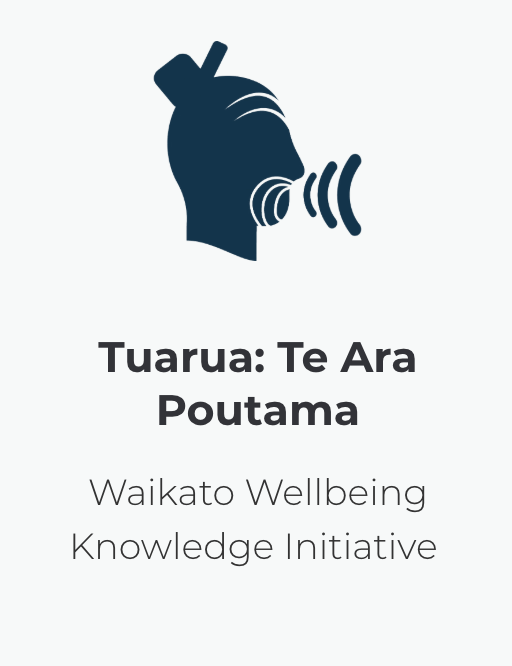Quarterly Data Stories & Insights
We have launched a regular quarterly “Did you Know?” data story series to bring the numbers to life. These are short, accessible insights that combine regional data with real-world impact, bringing evidence and local insight to the forefront. Each data story features interactive visuals and localised data, designed for community leaders and whānau alike. The purpose of each report will be to take a key regional topic, explore the state of knowledge for that and then explore how those numbers affect wellbeing- of people and communities. Our objective is to firstly present the numbers as they actually are, but then to get behind the numbers to see what they really mean in the real world.
Our first two reports will be:
Hiding in Plain Sight: A deep dive into the real cost of housing in Waikato –- see next item.
Labour Market Watch: Unpacking employment challenges and opportunities emerging in the Waikato region
Labour Market Pressures and Shifting Opportunities
Unemployment in Waikato has risen to 5.6% (March 2025)—its highest in a decade and 0.8 percentage points above the national average (Stats NZ, 2025). The burden is not equally shared:
Pacific Peoples: 16.1%
Māori: 11.6%
European/Other: 3.5%
Job losses have hit core industries hard, with 350+ redundancies in forestry and food processing, including at Kinleith Mill and Fonterra Canpac. However, signs of recovery are emerging, with over 580 new jobs projected in energy, construction, and aviation (Genesis Energy, South Waikato District Council, 2025). Facilitating the transition of displaced workers into new roles, along with workforce planning and mobility support, will be critical for ensuring a long-term dynamic labour market for the region[1]. The full labour market report will be available in August.
Preview: 2025 State of the Region – Wellbeing Signals from the Waikato
We are currently preparing the 2025 State of the Region Wellbeing Report, as part of the Waikato Wellbeing Project’s wider efforts to track progress across key social, economic, environmental, and cultural outcomes. While the full report is still in development, early findings are already revealing important signals about where the region is heading — and where work is most needed.
Economic growth has continued, with 77,890 new jobs added since 2011, bringing the total number of filled positions in Waikato to 248,665 as of March 2024 (Infometrics, 2025). Yet this growth masks persistent inequalities, particularly for Māori, Pacific Peoples, young people, and low-income communities. As highlighted in our earlier wellbeing briefings, job quality, access, and mobility remain unevenly distributed across the workforce.
The Māori economy continues to strengthen, with an estimated regional GDP of approximately $1.4 billion, supported by roughly $6.2 billion in assets (Te Puni Kōkiri, 2016; Infometrics, 2024). Alongside this economic growth, the protection of Māori data sovereignty, inclusion in governance, and leadership opportunities, anchored by principles such as mana motuhake, Kaitiakitanga, and Kotahitanga are important goals.
Housing remains a key pressure point. The number of people experiencing homelessness in Waikato has surpassed 1,600, while emergency housing placements have nearly tripled over the past decade (Ministry of Housing and Urban Development, 2024; Ministry of Social Development, 2024). These trends reinforces continued demand-side pressures despite increases in public housing
Early wellbeing indicators suggest strain. Our earlier wellbeing pulse checks revealed a decline in life satisfaction, from 86% in 2022 to 79% in 2023 (Waikato Wellbeing Project, 2023). Food insecurity remains a significant challenge, affecting over 18,000 households in 2024 (Waikato Wellbeing Project, Food Insecurity Report, 2024). These themes have been repeatedly raised through community engagement, particularly in relation to tamariki wellbeing and whānau resilience[2].
Access to opportunity is also unevenly shared. As we have analysed in our recent data and insights, only 28% of Waikato residents live within a 45-minute public transport commute of key employment hubs. In Huntly, nearly half of job seekers (43%) report having no access to a private vehicle, which limits their ability to connect with work, training, or health services (Waikato Regional Council, 2024).
These signals highlight an important insight from the Waikato Wellbeing Project: while growth is valuable, it is equally essential to focus on broader well-being to ensure sustainable progress.
Our upcoming 2025 report will focus on the distribution of wellbeing — not just aggregate outcomes — and offer updated insights on the interconnected challenges facing our region. It will also help frame collective impact conversations, building on the WPI indicators, Te Ara Poutama, and community-driven priorities from the SDG-aligned wellbeing vision.
Stay tuned for the full release in the coming months.


